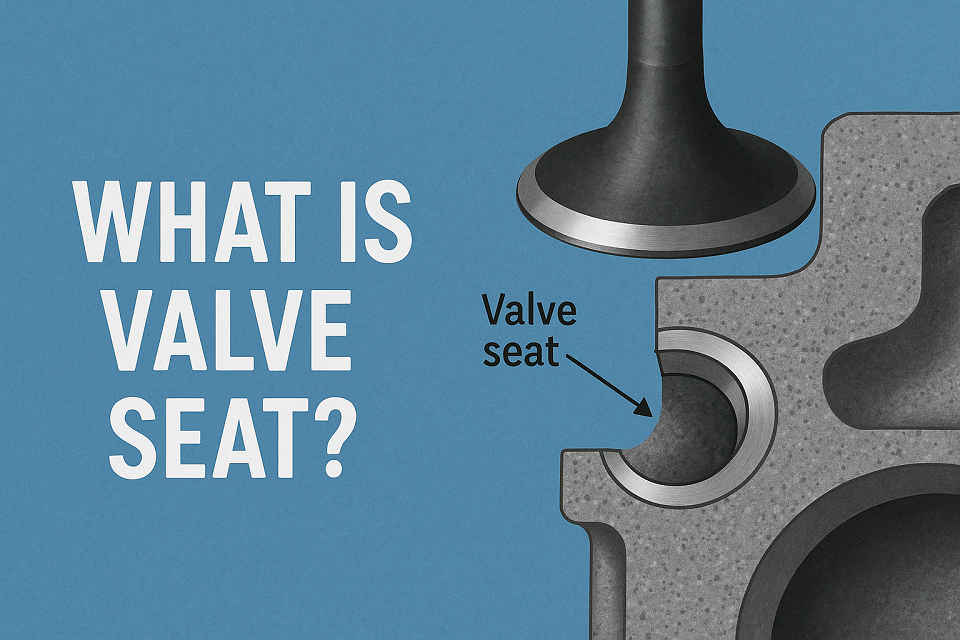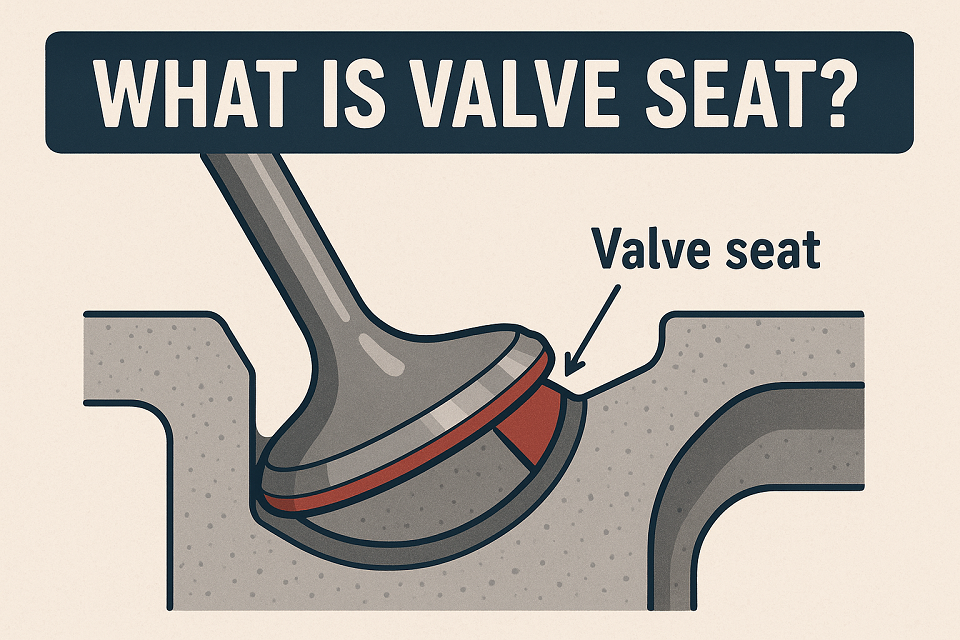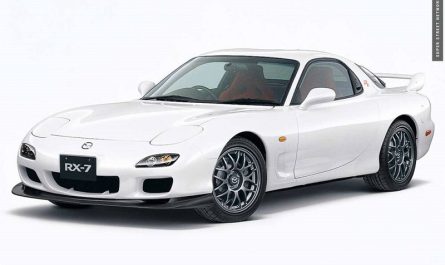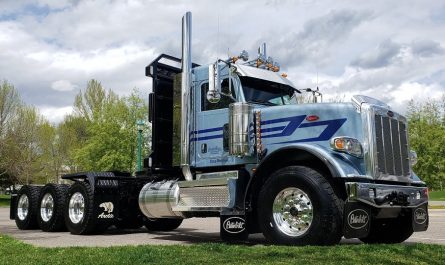Introduction
In internal combustion engines, few components are as critical as the valve seat. Though it may appear as a simple metallic ring, this component plays a pivotal role in ensuring engine operation’s efficiency, reliability, and longevity. It functions under extreme thermal and mechanical stress, facilitating vital processes such as combustion, sealing, and heat dissipation. This article provides a comprehensive, academically grounded explanation of valve seats, focusing on their function, material selection, manufacturing processes, types, failure mechanisms, and diagnostics. This text is tailored for readers with a collegiate background in mechanical or automotive engineering.

Defining the Valve Seat
A valve seat is a precision-engineered ring, either integral to or inserted within the cylinder head of an internal combustion engine. It serves as the mating surface against which the intake or exhaust valve rests during its closed phase. The seat must form an airtight seal to maintain cylinder compression and prevent unwanted leakage of gases.
This component’s interaction with the valve is fundamental: it facilitates controlled gas exchange and preserves combustion integrity. Valve seats must sustain high-frequency cyclical loading, elevated temperatures, and aggressive chemical environments. Their reliability is essential for effective engine breathing, thermal management, and mechanical endurance.
To analogize: the valve acts as a dynamic plug, and the valve seat is its receptacle. A compromised seat is akin to a deformed socket—ill-fitting, leaky, and functionally deficient.
Primary Functions of the Valve Seat
The operational role of the valve seat extends beyond mere sealing. It integrates with multiple engine systems and contributes to both performance and component longevity.
1. Combustion Chamber Sealing
The primary function of the valve seat is to provide a gas-tight seal when the valve is closed. This seal maintains the high pressure necessary for effective combustion. Any imperfection leads to pressure loss, reduced thermal efficiency, and diminished engine power output.
2. Thermal Conduction and Heat Dissipation
During operation, combustion temperatures can exceed 2,500°F (1,370°C). The valve seat acts as a heat sink for the valve, transferring heat away from the valve face to the cooler cylinder head. This thermal pathway is vital to prevent valve overheating, deformation, and eventual failure.
3. Gas Flow Regulation
Precision geometry of the valve seat ensures optimal flow characteristics for the incoming air-fuel mixture and the outgoing exhaust gases. Computational Fluid Dynamics (CFD) studies confirm that seat contouring directly influences volumetric efficiency and engine breathing characteristics.
4. Mechanical Load Distribution
Repeated valve seating subjects both the valve and seat to significant mechanical stress. A properly hardened and aligned seat reduces localized wear, distributes mechanical loads evenly, and enhances the lifespan of the valvetrain components.
Material Selection Criteria for Valve Seats
Due to the harsh operating environment, material science plays a crucial role in valve seat design. The ideal material must exhibit high hardness, thermal conductivity, wear resistance, and corrosion resistance. Below are the most commonly used materials:
1. Cast Iron (Alloyed or Unalloyed)
- Historically prevalent in older engine designs.
- Cost-effective and easy to machine.
- Lower thermal resistance makes it less suitable for modern high-output engines.
2. High-Alloy Steel (Nickel or Chromium Alloys)
- Offers enhanced oxidation and wear resistance.
- Common in automotive and light-duty applications.
- Provides a balance between machinability and mechanical endurance.
3. Powder Metallurgy (Sintered Materials)
- Engineered through compaction and sintering of metal powders.
- Allows for tailored compositions and microstructures.
- Provides excellent thermal stability and wear characteristics.
4. Stellite (Cobalt-Chromium Alloy)
- Utilized in high-performance, aviation, and motorsports applications.
- Maintains mechanical integrity at extreme temperatures.
- High cost restricts use to performance-centric environments.
5. Copper and Bronze Alloys
- Employed in niche applications such as marine engines.
- Superior thermal conductivity facilitates rapid heat removal.
- Typically used with advanced lubrication and cooling systems.
Material choice is determined by the thermal load, engine duty cycle, and economic considerations. High-performance engines prioritize metallurgical excellence, whereas mass-market vehicles focus on cost-effectiveness and durability.
Manufacturing Process of Valve Seats
The fabrication of valve seats involves precision engineering to ensure functional reliability and dimensional accuracy. The process is as follows:
1. Material Specification and Selection
Metallurgists and design engineers analyze operational requirements—including thermal cycles, mechanical stress, and environmental exposure—to determine the optimal material.
2. Perform Shaping
The raw material is shaped into ring preforms using forging, casting, or powder metallurgy techniques. Powder metallurgy is often preferred for its material uniformity and customizability.
3. Thermal Treatment
Heat treatment (e.g., quenching and tempering) is applied to enhance hardness, fatigue resistance, and structural integrity. This step is crucial for high-temperature applications.
4. CNC Machining
Precision machining on CNC equipment ensures the valve seat’s concentricity, taper, and dimensional fit. This step also defines critical sealing angles and geometric contours.
5. Installation in Cylinder Head
Two primary installation methods are used:
- Interference Fit (Press Fit): The seat is pressed into a slightly undersized cavity.
- Thermal Fit (Shrink Fit): The seat is cryogenically cooled and inserted into the heated cylinder head. Upon thermal equilibrium, a tight fit is achieved.
6. Finish Grinding and Lapping
After installation, the seat is lapped to mate precisely with the corresponding valve face. This ensures a continuous and uninterrupted sealing surface for combustion integrity.
Valve Seat Configurations
Two principal configurations exist in engine design:
1. Integral Valve Seats
- Machined directly into the cylinder head casting.
- Typical of older cast iron engines.
- Less adaptable to repair and performance upgrades.
2. Insert Valve Seats
- Independent components installed into the head.
- Compatible with aluminum heads.
- Preferred for modularity, serviceability, and the ability to employ exotic materials.
Common Failure Modes
Despite advanced material science and manufacturing, valve seats remain susceptible to several failure mechanisms:
1. Thermal Fatigue
Prolonged exposure to heat cycles can cause micro-cracking, leading to surface degradation and eventual leakage.
2. Improper Installation
Incorrect seat interference or thermal expansion mismatches may cause seat loosening, cracking, or distortion.
3. Fuel Contamination
Abrasive particulates or corrosive agents in low-quality fuel can chemically erode seat surfaces.
4. Mechanical Misalignment
Inaccurate valve seating or excessive cam lift can induce impact damage or accelerated wear.
5. Insufficient Lubrication
Depleted oil film and overheating may exacerbate metal-to-metal wear and galling.
Early identification and remediation are critical to preventing catastrophic engine damage.

Symptoms of Valve Seat Degradation
Malfunctioning or worn valve seats often manifest through various observable engine behaviors:
- Power loss and suboptimal throttle response
- Engine knocking or pre-ignition sounds
- Rough idling and engine misfires
- Unusual exhaust coloration (blue or white smoke)
- Elevated oil consumption
- Decreased fuel economy
Professional diagnostics, including compression testing and leak-down analysis, are recommended for accurate assessment.
Remediation Techniques
Depending on the extent of wear or damage, valve seats can be restored or replaced:
1. Seat Reconditioning
Using seat grinders or specialized cutting tools, the sealing surface is re-profiled. This is suitable for minor wear.
2. Seat Replacement
Heavily damaged seats are removed via machining, and new inserts are fitted. Selection of appropriate material and fitment technique is crucial.
3. Performance Upgrades
Engines subjected to high loads may benefit from upgraded materials such as Stellite, or ceramic-coated seats for reduced friction and superior heat resistance.
All remedial procedures should be conducted in a controlled workshop environment by trained technicians to ensure engine integrity.
Conclusion
Though unassuming in appearance, the valve seat is integral to the performance and health of internal combustion engines. From sealing high-pressure combustion gases to transferring heat and guiding gas flow, it underpins numerous engine functions. Understanding its material characteristics, fabrication processes, and failure mechanisms equips mechanical engineers and automotive professionals with the knowledge necessary for maintenance, diagnostics, and performance tuning.
As the automotive industry transitions toward more efficient and durable engine technologies, the role of advanced valve seat materials and engineering will only grow more prominent.


